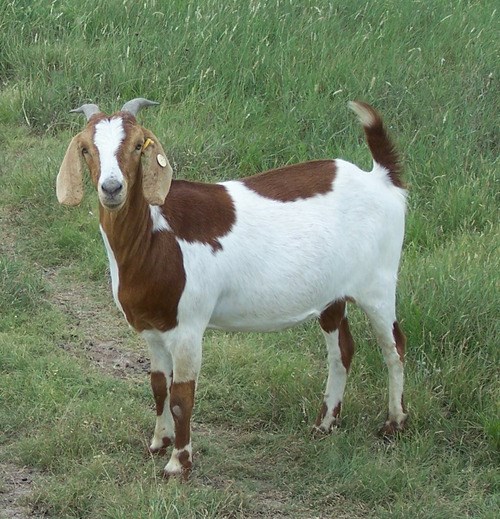When you look at nutrition as a whole, it is really hard to say that one nutrient is more important than others. Without energy, the body and the microorganisms would not have the fuel to function. Without minerals, the chemical reactions that occur during digestion and metabolism would be limited. Without vitamins, some key reactions in the body could not occur. However, of all of the nutrients necessary for maintenance and production in ruminants, protein probably holds an edge over the others as being slightly more important.
The reason for this is that if it is limited, the population of microorganisms in the rumen that break down fibers and starches would be restricted. For a ruminant, limiting the population of the microorganisms will have the effect of restricting forage intake because an animal can’t eat more forage until some of the fermenting forages passes out of the rumen. If forage intake is restricted, then all of the other nutrient intakes will be restricted as well. Also, the amount of muscle tissue that could be created would be reduced, and the amount of milk produced, would be limited even with a sufficient amount of energy, both of which would begin to limit the productivity of your animals.
So, just what is this very important nutrient called protein. The simplest definition for a ruminant animal is the total amount of nitrogen in a feed ingredient, or the diet. Proteins are made up of chains of amino acids, which are carbohydrate molecules with an amino group attached. An amino group contains nitrogen, and it’s this nitrogen that separates carbohydrates from proteins.
To measure the amount of protein in a forage or feed, a lab technician will isolate the percent of nitrogen from a sample, and multiply it by 6.25. Nitrogen makes up 16% of an amino acid molecule, and if you divide 100% by 16%, you get 6.25. So that’s the conversion from nitrogen content to protein content.
Natural proteins, called this because they exist in plant and animal tissues as proteins, are made up of chains of these amino acids. The microorganisms in ruminants have the unique ability to break these amino acid chains down, then break the amino acids down, and then re-combine them to form new amino acids.
There is another type that ruminants can use called “equivalent protein”. This is essentially nitrogen in an inert form such as ammonia, or urea, which breaks down to ammonia in the rumen, and becomes readily accessible to the microorganisms in the rumen. If there is sufficient energy available in the rumen, these microorganisms can then use the ammonia to produce amino acids.
Protein that is broken down by the microorganisms in a rumen are called “degradable proteins”. The extent of the degradability of the protein in a feed depends on how much heat was applied to the feed, if there are any compounds that will coat it and resist access by microorganisms, and how much time the feed spends in the rumen being acted upon by the microorganisms.
The protein created by the microorganisms is called “microbial protein”, because it is actually made up of the microorganisms. The microorganisms use the source protein in the rumen to reproduce and increase in numbers. In each of the microbes, there is a cell nucleus which contains the DNA of the microbe. This DNA, and a companion RNA, is made up of protein – the microbial protein.
The part of the natural protein consumed each day that is not broken down in the rumen and made available to the microorganisms is called “undegradable protein”. It has also been termed “by-pass protein” or “escape protein”. These pass through the rumen without being broken down into amino acids and is not available to the microorganisms.
The microbial protein and undegradable protein move through the reticulum and the omasum to the abomasum, where it undergoes an acid/enzyme digestion just like in humans or pigs. There is it broken down into amino acids that can be absorbed through the wall of the small intestine and into the bloodstream.
Degradable and undegradable values for most common feed ingredients have been measured, but these values are averages and will vary depending on the growing conditions, maturity, and processing conditions of the ingredients. More importantly, these figures are for cattle. Some laboratories have developed procedures which allow them to estimate the degradable protein levels of feeds and forages. Having these values can help nutritionists to determine the types that will correct your deficiencies most economically.
Little work has been done to compare the degradability of feeds in sheep, goats, or deer compared to cattle. Sheep, goats, and deer have faster passage rates than cattle. Since protein degradability is affected by the time the feed spends in the rumen, it is logical to assume that the protein in a feed does not degrade as completely in animals with faster rumen passage rates.
If you just understand that a ruminant needs both degradable and undegradable protein in its diet, that the higher the productivity of an animal the greater need for undegradable, and the relative degradability of the more common feed ingredients, you will be ahead of most livestock producers and started on a path to help you use supplements more wisely and efficiently.
Protein may well be the most important nutrient. It is definitely the most expensive nutrient we feed our animals. Both of these factors should encourage you to learn more about it and how to use it more wisely.
Interested in our mineral products? Click here.


